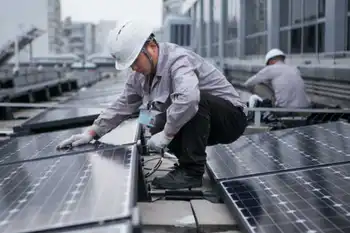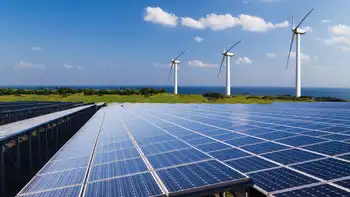GE Hitachi, Detroit Edison team up on reactor
The agreement on site preparation work planning is a step forward in the federal license application process as GEH brings to market the ESBWR nuclear reactor to help energy companies meet rising electricity demand with clean-air energy. As part of a balanced and diversified energy portfolio, nuclear power generates electricity with near-zero carbon emissions.
GEH believes the ESBWRÂ’s features make it the most advanced reactor design in the world, including passive safety systems, a further simplified design and even higher safety margins than the safe fleet of reactors operating today.
These features were important to Detroit EdisonÂ’s decision to name the ESBWR reactor design in its application to the U.S. Nuclear Regulatory Commission (NRC) for a construction and operating license for a proposed power plant on the site of its existing Fermi 2 Power Plant, 35 miles south of Detroit. Detroit Edison is DTE EnergyÂ’s electric utility serving southeast Michigan.
“DTE Energy is committed to reducing greenhouse gas emissions and providing our customers the best long-term solution for their energy needs,” said Ron May, DTE Energy senior vice president, major enterprise projects. “GEH’s ESBWR meets these requirements as the best technical solution for the expected 60-year life of the proposed plant. Nuclear energy is clearly a low-cost fuel source for our customers and provides excellent safety and reliability.”
The agreement is the latest milestone in the ESBWRÂ’s commercial development. In August, GEH submitted a comprehensive, revised design certification document to the NRC on the ESBWR. In April, GEH announced fabrication had begun on the first ESBWR reactor pressure vessel by Equipos Nucleares SA (ENSA) in Spain.
Under the agreement, GEH will work with Detroit Edison to plan the initial stages of site development, should the utility decide to proceed with construction of a new plant. The energy company anticipates a decision on proceeding with construction following approvals from local, state and federal authorities.
The agreement coincides with a recent summit meeting DTE Energy convened in Detroit to inform MichiganÂ’s economic development leaders of the opportunities that the nuclear industry can provide for Michigan businesses that may be struggling with the disruption and contraction of the auto industry.
“While Michigan’s economy has been hurt by the recession, we truly see opportunity ahead,” said Danny Roderick, GEH senior vice president for nuclear plant projects, who addressed the November 3 summit. “The contraction of the auto industry has created a surplus of expertise and capacity in the engineering and manufacturing segments. These assets, coupled with the region’s access to international markets by maritime shipping, provide a foundation for the development of a Michigan-based nuclear supply industry with a U.S. and international scope.”
Construction of an ESBWR could create more than 3,000 temporary construction jobs and up to 700 permanent engineering and other support positions, resulting in an economic ripple effect totaling $500 million annually for the Michigan economy. By submitting the NRC application in 2008, Detroit Edison remains eligible for federal incentives offered under the Energy Policy Act of 2005 to a limited number of utilities that place orders for the first new U.S. nuclear reactors.
Today, nuclear energy provides about 20 percent of U.S. electricity and is one of the only virtually zero-carbon, baseload energy sources available. As the nationÂ’s demand for energy continues to grow, energy companies will need to build about 25 new advanced reactors by 2030 to simply maintain nuclear energyÂ’s 20 percent role in the U.S. energy portfolio, according to the Nuclear Energy Institute. Expanding nuclear energyÂ’s role could help countries around the world meet carbon-emission goals.
Related News

Solar Now ‘cheaper Than Grid Electricity’ In Every Chinese City, Study Finds
BEIJING - Solar power has become cheaper than grid electricity across China, a development that could boost the prospects of industrial and commercial solar, according to a new study.
Projects in every city analysed by the researchers could be built today without subsidy, at lower prices than those supplied by the grid, and around a fifth could also compete with the nation’s coal electricity prices.
They say grid parity – the “tipping point” at which solar generation costs the same as electricity from the grid – represents a key stage in the expansion of renewable energy sources.
While previous studies of nations such…




